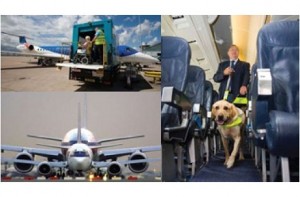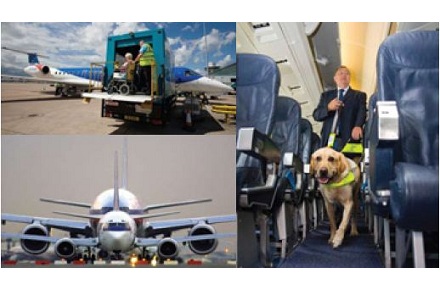The Health and Safety Executive (HSE) has published guidance that provides information to help manage the risks to health and safety in the air transport industry.
 |
| [relatedPosts title=”Related Posts”] |
|
|
Guidance is available on how to manage the risks from:
- Aircraft Turnaround –
A guide is available for airport and aerodrome operators, airlines and service providers on achieving control, co-operation and co-ordination.This provides advice for airport or aerodrome operators, airlines or aircraft operators, and service providers (including ground handlers) reflecting the significant incidence of accident rates in comparison to other industries and the reality that associated turnaround activities are in the same high risk categories as the construction and agriculture sectors. Accordingly, the guidance examines the gamut of everyday dangers facing airport – particularly apron – workers, such as manual handling, falls from heights, moving vehicles, fire and explosion, hazardous substances, noise, electricity, machinery and slips and trips. Also explores all aspects of service provision and covers the critical subject of contracts. Not applicable to private pilots, flying schools, flying clubs or aerodromes that only serve such use.
- Assisting disabled passengers – The Civil Aviation (Access to Air Travel for Disabled Persons and Persons with Reduced Mobility) Regulations 2007 came into force in July 2007 and are enforced by the Civil Aviation Authority (CAA). Airport authorities now have responsibility of ensuring safe access for disabled people. This is from the time they arrive at the airport until the time they leave.
- Baggage Handling – The manual handling of baggage and cargo onto and off aircraft presents a risk of manual handling injury to the ground handlers involved in these tasks. Similar risks are also present where baggage can be manually handled, for example security check-points, passenger check-in desks etc.
- Musculoskeletal Disorders – Each year in the air transport industry, the HSE receives incident reports of employees injuring themselves through manual handling. The majority of these injuries result from baggage handling.Other work activities, such as cargo handling, pushing/pulling work equipment such as aircraft steps/baggage dollies etc are also high-risk in relation to employees sustaining a MSD. Employees are also at risk of sustaining a MSD when assisting disabled or reduced mobility passengers, unless this activity is suitably managed.
- Working from Height – Each year in the air transport and aviation industry, the HSE receives reports of employees injuring themselves after failing from a height. Many of major injuries occur during:- aircraft maintenance; getting in or out of aircraft; working on or from service equipment such as belt loaders; catering high loaders etc.
Further Information
- HSG209 ’Aircraft Turnround’ pdf, can be found here.
- ‘Access to Air Travel for Disabled People – Code of Practice’ – Department for Transport pdf, can be found here.
- RR675: Musculoskeletal ill-health risks for airport baggage handlers pdf, can be found here
- Manual Handling – FAQ’s can be found here.
- Preventing falls from height during aircraft maintenance, please click here
- Preventing falls from height from, or when opening or closing aircraft doors, please click here.
- HSE: Health & Safety in the air transport industry, can be found here.





